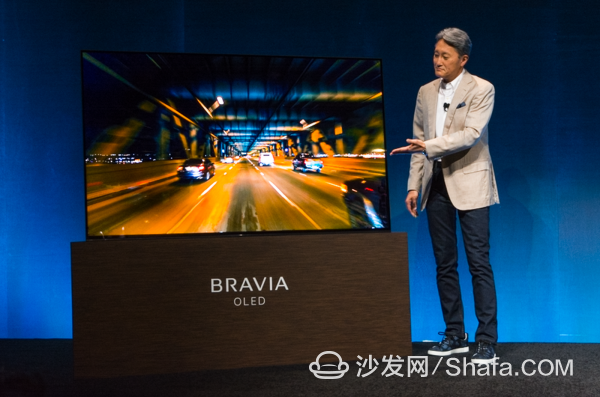
â— OLED was Sony's pain
Looking at reports after Sony released A1E, many media have used descriptions such as "Sony finally joined the OLED camp," but this is not accurate.
OLED is not something new for Sony, so the description of "Sony finally joined the OLED camp" is not accurate. To know that as early as ten years ago in 2007, Sony has introduced the world's first commercialized OLED TV: XEL-1 (In addition, in recent years, Sony's professional equipment business also has high-performance medium-sized OLED monitoring for the field of broadcasting and television. In sales.)
The XEL-1 almost perfectly embodies all the advantages of OLED technology: The performance in display performance makes it almost impossible for anyone at that time to look directly: for example, its contrast can reach 1 million: 1, which is 100% of the commercial products of the year. Around the time; response speed ratio is also 1000 times faster than the LCD, and it can only 3mm thick screen, only about 1/100 the average thickness of LCD TVs at that time (even in today's top performance), power consumption is only the LCD 1/3 or so.

(XEL-1)
Although the XEL-1 has an unmatched glare from the point of view of innovation and product technology, its fate is very unsatisfactory. XEL-1 has been plagued by high prices and insufficient capacity since its launch, so it stopped production in less than a year and subsequent product development was shelved.
If it were just a failure of a new product, it wouldn't be a big problem for Sony, which has a lot of new products coming out every year. But for Sony at that time, especially TV business, it was a big blow: Due to the slow pace of transition after entering the LCD era and the lack of layout in the upstream LCD panel, Sony TV business began falling into a sustained loss-making quagmire since fiscal year 2005. Sony therefore devotes a lot of effort to OLED technology and is eager to reverse it through OLED. At the time, the liquid crystal field lag behind the plight of other competitors, and the market performance of the XEL-1 basically announced the failure in this direction.
Now it is time to analyze the causes of the loss of XEL-1. The most important reason for this problem is that OLED technology was too advanced in that era. Although Sony can mass-produce OLED screens on a small scale, it was the most fundamental problem that the mass production of large-size panels could not be solved in a short time when the entire industry was not fully equipped.
Subsequent Sony can only continue to struggle in the liquid crystal field. Although many South Korean color TV companies and Chinese color TV companies have launched numerous OLED TVs in succession since 2012, for Sony, which has suffered from OLED damage, the XEL-1 was launched in 2007 to this 2017 release. A1E, Sony has never had an OLED TV for a whole decade.
A technology that once allowed Sony to revive its hopes of escaping its TV business was re-used ten years later. Not only is the OLED industry chain maturing, it is also inseparable from Sony's reorientation of its color TV business.
â— A1E is the crystallization of Sony's focus on high-quality product strategies and has nothing to do with the team
In 2015, after the “father†Hirai Hirai came to power, he made drastic changes to the entire Sony Corporation, and the Sony TV business as the soul of Sony was the focus of reform. Specific to the product level, we have adopted a strategy that focuses on mid-to-high-end markets. Apart from substantially simplifying the huge product structure, we have gradually increased the research and development of high-end models, that is, high-quality models.
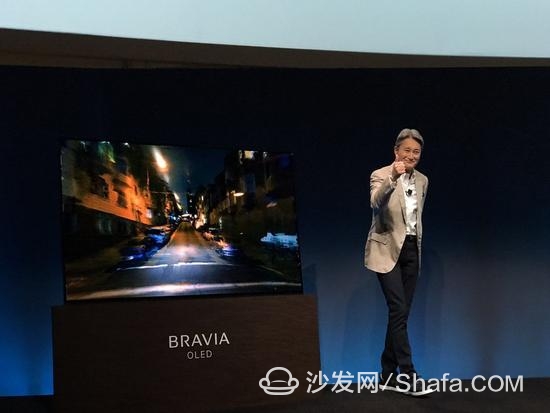
When interviewing the media, Mr. Mujing, vice president of Sony TV business, repeatedly stressed that now Sony is no longer tangled up whether to insist on using a particular display technology, because now the company's fundamental goal is to make the best picture quality sound quality. The products, regardless of the display technology, can be used as long as they meet Sony's approved performance standards.
On the other hand, the entire OLED industry chain has become more and more mature after entering 2012. The supporting conditions of related upstream industries have changed dramatically since 2007. Although only South Korea's LG Display has mastered the mass production capacity of large-size OLED panels, the stable production capacity of millions of wafers per year can basically meet the needs of downstream companies and end markets. The problem that caused the failure of XEL-1 has been basically disappear.
Under the dual promotion of its own strategies and supporting industries, Sony's introduction of OLED TVs has become a matter of course. After all, OLEDs still have very distinctive qualities in display characteristics. For those engineers who have worked at Sony for decades and are trying to make a "perfect" TV set, they have the opportunity to show their talents.
Mr. Kubo, who is the head of the A1E project, introduced the original intention of AE1 development at the CES. He said that his greatest desire in his career is to create a "perfect" picture quality. In his mind, the perfect television set must achieve the ultimate in three areas: quality, sound and design. The A1E adopting OLED technology has further narrowed the distance from his ideal television in these three aspects. Although there is still some distance from perfection, the emergence of A1E is indeed an old engineer who has developed televisions for several decades. A very glorious thing.
Although from the second half of 2016, the competition between OLED and Quantum dot technology has intensified, but in fact Sony chose to launch OLED TVs, and it is because of which kind of technical route to stand in line. They just want to make their own ideals. Perfect TV. As for certain brands at CES, they are strongly advocating that they will firmly adopt a particular display technology. Now Sony is definitely not going to do that.
Therefore, after the launch of A1E, many media are screaming at how the OLED camp has “finished†such heavyweight players as Sony. If you understand the logic behind this, you should not think so much.
â— A1E is Sony's new challenge
Speaking for a long time, let's take a look at the A1E product itself.

The popularity of A1E on the Internet has been booming these days. But objectively speaking, A1E itself does not use too many breakthrough or revolutionary new technologies, which is not the same as when the top LCD Z9D was released last year.
First of all, the OLED panel used by A1E is not new technology: Large-size 4K OLED TV panels from LG Display have been mass-produced for a long time, and many other brands of color TVs are also used. The A1E brain, X1 Extreme image processing chip in last year's Super LCD TV Z9D has been applied, and most people find the magic "Acoustic Surface screen sound field technology" (that is, do not need speakers, so that the screen directly emits sound) In fact, it is not a high-end stuff. The “fantasy†speakers that are commonly sold in stores cost hundreds of dollars in fact.
Although A1E has made great innovations in the design of exterior industrial designs, including the unprecedented shift of the "SONY" logo to the lower left corner of the screen frame and miniaturization, the "BRAVIA" logo was transferred to the back of the fuselage, and a subwoofer was integrated on the back support. Units and circuit interface devices are designed to guarantee a purely screen experience with virtually no visual interference, but this can only be attributed to aesthetic and industrial design achievements. There is no strong correlation with technological innovation.
But this in no way means that A1E is a mediocre piece of numbers. On the contrary, A1E is still a product that has created a new level of BRAVIA.
â— A1E still creates a new height
Why did A1E create a new height? The reason is as follows:
1. The sensory experience of music and painting
In order to improve the sound quality of traditional televisions, you can use high-performance speakers, more speakers, etc. However, no matter how hard you work out, there is a problem that is difficult to solve. It is the restoration of the sound field. Whether setting the speakers on both sides of the screen or the most common setting of the speakers at the bottom of the screen, there will be some problems with sound and picture separation, especially on the now popular split TV, due to the speaker and the screen portion. Distance is relatively far, and it is more prone to such problems.
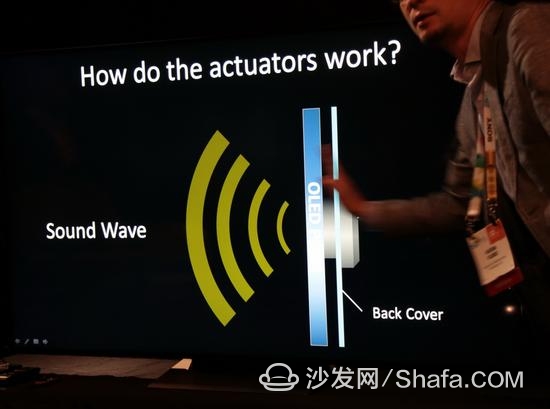
The "Acoustic Surface screen sound field technology" makes the entire screen of the A1E a huge speaker unit through the left and right two groups of four drivers, and it also has stereo characteristics. As mentioned earlier, although this technology is not new in itself, it is actually the first time that it has been used on televisions.
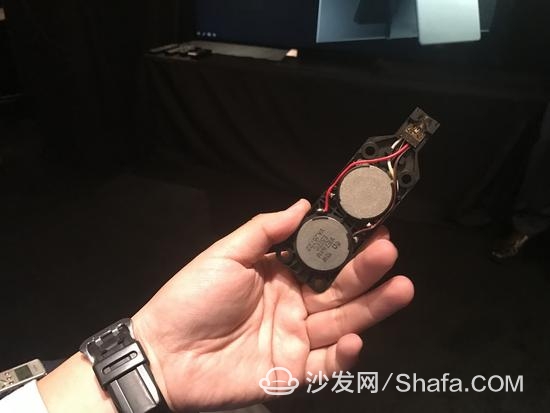
The A1E's four vocal drives are actually very small in size. Each one is about a CPU, so when the author saw the drive at the closed-door conference of Sony during the CES, the first question that comes to mind is Can such a small device make this huge screen sound loud enough?
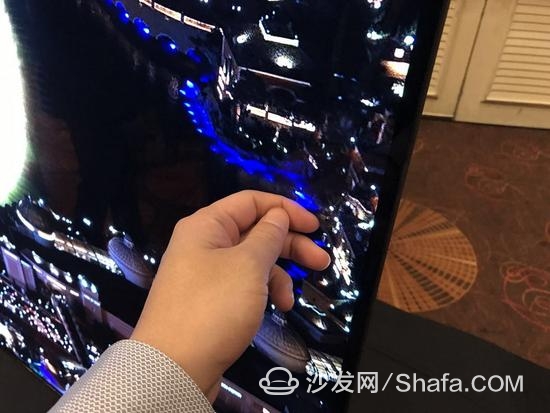
(You can feel the vibration obviously by touching the A1E screen by hand, and the amplitude of vibration in different areas is not equal)
The DEMO demo quickly answered the first question. The first DEMO was "Star Wars - Force Awakening" which was released last year. The volume of the A1E is set to be the largest. In the grand space background, the fighter engine roars, the whistle of dense laser guns, and the effect of explosions. It is clear, direct, full-feeling and unbreakable, and the entire sound is from the entire 65-inch screen (65演示A1E for presentations), directly into the ear, and the sense of combination with the picture is extremely high. Feelings generally only appear in advanced projection systems that use sound-transmissive screens.
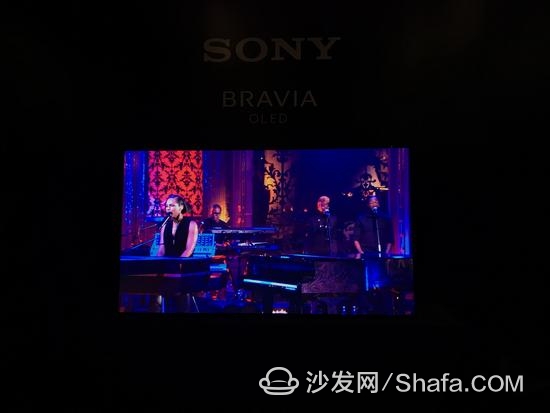
The second DEMO came from the scene of Alice Smith's singing. When enjoying music video programs, the TV speaker system is more difficult to achieve the exact “image†in the HiFi system. However, under the screen technology of A1E, the entire screen and sound are highly integrated, and you can feel clear. The sound comes from the screen, and it completely coincides with the orientation of the singer. This kind of experience is not much related to the level of sound quality. It belongs to the human ear's perception of the distribution of sound in three-dimensional space.
After listening to the second paragraph of DEMO, the question of A1E sound quality disappeared. The overall tone of the A1E is clear and crisp. It does not drag on the water. The sound also has a certain degree of density and texture. The details are rich. The volume of the bass is slightly thin, but it is still much better than I thought.
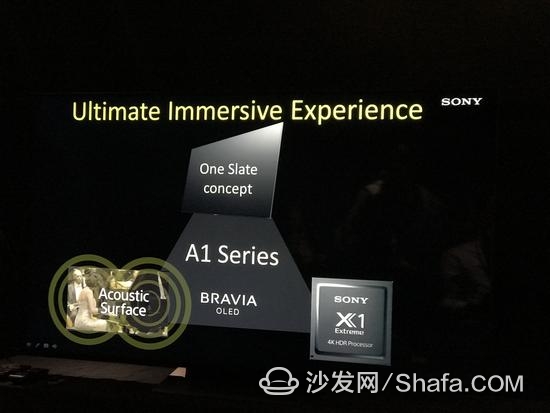
In Sony's lineup of BRAVIA products, to pick out sound quality, timbre, and low-frequency effects is better than A1E, it should be said that several can be found. However, with A1E more than the sound field effect and the integration of sound and picture, there should be no which is comparable.
2, high industrial design standards
Sony's industrial design standards are well-known to the world, and A1E's unique industrial design is of particular value.

The chief designer of A1E is Tako Hirotaka, who proposed the "slice of living" concept adopted by BRAVIA in recent years. In an interview at CES, he said that the essence of A1E's design is "minimalist", which will be subdivided into three dimensions: 1. pure slates purely plate-like geometry; 2. texture of material conscious CMF materials; 3 , furniture language and furniture coordination. A1E The entire machine has several plate-like structures, no matter which angle it is viewed, it is a combination of several plates, without any extra lines. In order to create an uninterrupted screen, he even came up with the idea of ​​shifting the "SONY" logo to the lower left corner of the screen frame and transferring the "BRAVIA" logo to the back of the fuselage. Under normal circumstances, this is absolutely no one to dare to do this. of. What is more dramatic is that when he was “uneasy†to submit the first draft of the A1E design to Pingyi Fu for review, the CEO did not propose any amendments, and he directly agreed to weaken the logo. This is a miracle.


(In fact, a cable is not visible behind this working TV. A1E's attention to details has already reached a crazy state.)
The A1E's back also has a subtle design. The flat-shaped bracket provides support for the screen, but in fact it is a huge woofer, but also the interface circuit and a variety of cable trunking. Tian Xing Hongchong said that they have also made many and many attempts to choose the material of the backboard, glass, resin, metal ..... the choice between the different materials, the impact on the product style, the impact on the home environment, Even the impact on sound quality is based on constant trials. They also did not make A1E very thin in order to deliberately demonstrate the trait of ultra-thin OLEDs, but also based on the consideration that the product is the most important and the home environment is integrated. After all, there are some things that can only be highlighted when they have a certain thickness. Texture.
3, the quality of the signboard
The OLED panel used by A1E is from LG Display. LG Display is also the only company in the world that can mass-produce large-size TV OLED panels. In addition to supplying Sony, it also provides OLED panels to LG Electronics, Skyworth, Konka and many other companies. . Why should we talk about the quality of A1E alone?
In fact, the reason is very simple. The panel is just the foundation. Some physical indicators possessed by the panel, such as brightness, color gamut, contrast, and response time, are indeed fixed at the factory. However, how to put the performance of these panels into play, can play a few, the difference between different color TV brands is very big.
What Sony is best at is the image engine part. We also mentioned that the A1E uses the same X1 Extreme chip as the Z9D. This is Sony's highest-end 4K HDR chip. It is the highest in the industry in terms of noise reduction, SDR signal processing, HDR reconstruction, resolution enhancement, and contrast enhancement. level. So even with panels of the same physical size, changing the set of image engines will make the final image very different. A simple analogy is like a video card, because the driver software is different, the number of frames in the same game is much worse, the same reason.
As for the advantages of the OLED screen itself, there is no more to say, because it can not achieve the level of liquid crystal in the maximum brightness, color gamut, response time, especially the performance of the black position has long been recognized in the industry. In addition, A1E also supports the transfer functions of the ST2084/PQ and HLG HDRs. This is sufficient for OLEDs with the highest brightness to ensure good HDR.
Based on the above three points, we can draw a conclusion that A1E has created a new height of BRAVIA.

(The author and the A1E developer's photo, the left one is the sound engineer, the second on the left is the project leader Mr. Kubo, the right one is the image engineer Ogura Min)
Finally, I went back to the question at the beginning of the article: "Why did Sony do this A1E OLED TV?"
First, the emboldened, can let their own OLED and other brands of OLED in the quality, sound quality and design distance.
Second, product strategy needs, can provide wealthy people, cable powder and audio-visual enthusiasts to provide an alternative to LCD products.
As for what changes will be brought to the OLED market after the appearance of A1E, the OLED/QLED will affect the trend of the two genres, I do not think Sony is A1E this product considered the issue.
Micro inverter is a small inverter used in solar power generation systems, its main function is to convert the direct current generated by a single Solar Panel into alternating current. Unlike traditional centralized inverters, microinverters are usually equipped with one per solar panel, that is, each solar panel has an independent microinverter.
Main effect:
1. Individual control: The microinverter provides independent conversion control for each solar panel, which means that each solar panel can optimize its power output individually. This maximizes the power generation efficiency of the solar panels since shading or other influences only affect the power generation efficiency of individual panels, not the entire array.
2. Reliability: Since each solar panel is equipped with a micro-inverter, even if one of the inverters fails, the other panels can still work normally, thereby improving the reliability of the entire system.
3. Flexible installation: Micro-inverters are usually small and can be installed near solar panels without being concentrated in one location, so installation is more flexible and convenient.
Differences from other inverters:
1. Individual control: Compared with traditional centralized inverters, microinverters provide independent conversion control for each solar panel, enabling each panel to reach its maximum power output.
2. Fault isolation: The micro-inverter has the function of fault isolation. Even if one of the inverters fails, other panels can continue to work without affecting the operation of the entire system.
3. Installation method: The micro-inverter can be flexibly installed near the solar panel, and does not need to be concentrated in one location, so the installation is more flexible and convenient.
4. Applicable scale: micro-inverters are usually used in small-scale solar power generation systems, while traditional centralized inverters are suitable for larger-scale photovoltaic power plants.
Overall, the main role of microinverters is to individually control and optimize the power generation efficiency of solar panels and improve the reliability of the system. Compared with traditional centralized inverters, it has some advantages in terms of flexibility, fault isolation and applicable scale.
grid tie micro inverter, off grid solar micro inverter, hoymiles microinverter price, micro inverter solar system, solar system with micro inverters
Ningbo Autrends International Trade Co., Ltd. , https://www.china-energystorage.com
